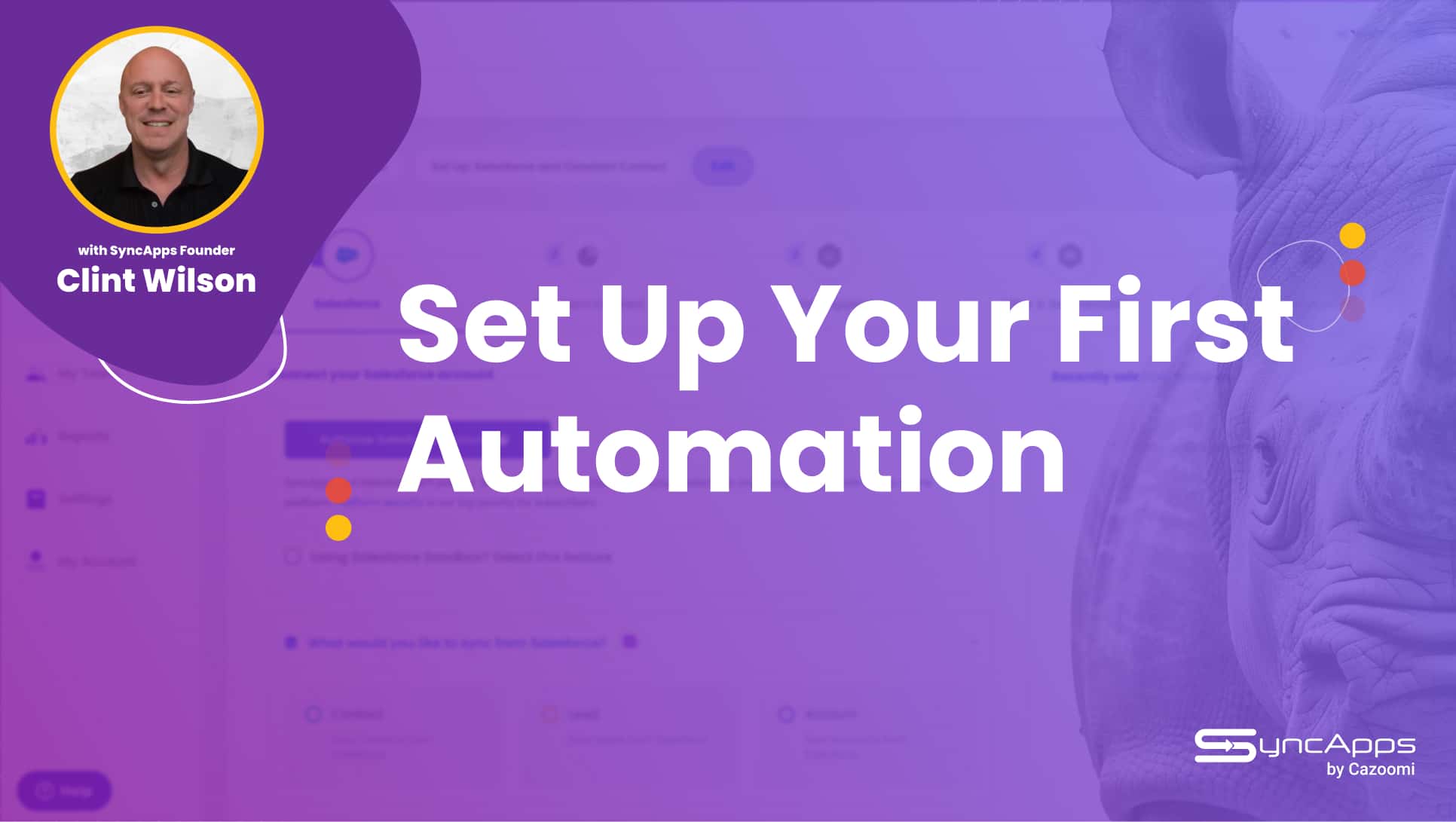Best Practices in Marketing Automation: Tips to Enhance Your Campaigns
Picture this: Your marketing campaigns running smoothly 24/7, leads being nurtured automatically, and your team focusing on strategy instead of repetitive tasks.
Marketing automation isn’t just another buzzword to add to your collection – it’s the secret sauce that helps businesses scale their operations without scaling their stress levels.
Whether you’re just dipping your toes into automation or looking to optimize your existing processes, this comprehensive guide will help you navigate the waters of marketing automation with confidence.
Table of Contents
- Understanding Marketing Automation Fundamentals
- Essential Marketing Automation Best Practices
- Define Clear Goals and Objectives
- Know Your Audience Inside Out
- Create Engaging Content Strategy
- Master Lead Flow and Scoring
- Implement Personalization Strategies
- Optimize Multi-Channel Experiences
- Implementation Tips and Best Practices
- Common Pitfalls to Avoid
- Measuring Success
Understanding Marketing Automation Fundamentals
Before we dive into the nitty-gritty of best practices, let’s make sure we’re all on the same page about what marketing automation really is.
Think of marketing automation as your digital marketing assistant who never sleeps, takes coffee breaks, or asks for vacation time (though we highly recommend you take yours! 😉). Marketing automation is the use of software to automate repetitive marketing tasks and workflows.
But here’s what most people get wrong: it’s not about removing the human element from marketing – it’s about enhancing it. As we’ve seen in our work with over 25,000+ subscribers globally, automation helps teams focus on what humans do best: strategy, creativity, and building genuine connections.
Fun Fact: According to our research material, successful marketing automation isn’t just about setting up automated emails – it’s about creating a comprehensive system that includes lead scoring, personalization, and multi-channel experiences.
Common misconceptions about marketing automation include:
- It’s only for big businesses (Spoiler: It’s not! Check out how small businesses can leverage automation)
- It’s completely hands-off (Sorry, but your automation needs regular TLC)
- It’s all about email marketing (While email is important, it’s just one piece of the puzzle)
- It’s too complicated (With the right approach and tools, it’s easier than you think!)
Ready to explore the best practices that will take your marketing automation from “meh” to “magnificent”?

Essential Marketing Automation Best Practices
Let’s dive into the practices that separate the marketing automation masters from the mundane. And trust us, after helping thousands of businesses streamline their operations, we’ve seen what works and what falls flatter than a failed soufflé!
1. Define Clear Goals and Objectives
First things first – if you don’t know where you’re going, any road will get you there (and probably not where you actually want to be!).
Key Goals to Consider:
- Lead generation and nurturing efficiency
- Customer engagement improvement
- Sales and marketing alignment
- Revenue growth targets
- Resource optimization
Pro Tip: Your automation goals should follow the SMART framework: Specific, Measurable, Achievable, Relevant, and Time-bound. For example, “Increase qualified lead generation by 25% in Q3” is much better than “Get more leads.”
Want to see how others are crushing their automation goals? Check out our real-world marketing automation success stories.
2. Know Your Audience Inside Out
Here’s where many businesses go wrong – they treat their audience like a monolithic group instead of the diverse collection of individuals they are. It’s like serving everyone at a party the same drink without asking what they prefer. (And trust us, not everyone appreciates a kale smoothie! 🥤)
Essential Steps for Audience Understanding:
Create Detailed Buyer Personas
Go beyond basic demographics.
Include:
- Pain points and challenges
- Goals and aspirations
- Preferred communication channels
- Content consumption habits
- Decision-making factors
Map Customer Journeys
Understand how your audience moves from awareness to purchase:
- Identify key touchpoints
- Note common questions at each stage
- Spot automation opportunities
- Plan content delivery timing
Did You Know? Our research shows that businesses that create detailed buyer personas and map their customer journeys see significantly higher engagement rates in their automated campaigns.
Learn more about creating personalized experiences in our guide to marketing automation personalization.
3. Create Engaging Content Strategy
Content is king, but context is queen – and in marketing automation, you need both to rule! Your automated campaigns are only as good as the content they deliver.
Content Best Practices:
| Content Type | Best Use Case | Automation Tip |
| Blog Posts | Educational content & SEO | Automate distribution based on user interests |
| Videos | Product demos & tutorials | Trigger based on user behavior |
| Infographics | Data visualization & quick tips | Share based on engagement history |
| Podcasts | In-depth discussions & interviews | Segment distribution by topic preference |
Remember to think beyond traditional email content – your automation strategy should encompass multiple content types and channels.
4. Master Lead Flow and Scoring
Let’s talk about lead scoring – or as we like to call it, “the art of not treating every website visitor like they’re ready to propose marriage to your brand!”
🎯 Setting Up an Effective Lead Scoring System:
- Demographic Scoring
- Job title: 5-10 points
- Company size: 3-8 points
- Industry match: 5-10 points
- Behavioral Scoring
- Website visits: 1-3 points per visit
- Content downloads: 5-15 points
- Email engagement: 2-5 points per click
Pro Tip: Don’t set it and forget it! Review and adjust your lead scoring criteria every quarter based on actual conversion data. Your lead scoring should be as dynamic as your market!
Learn more about optimizing your lead flow in our detailed guide on lead generation and nurturing through automation.
5. Implement Personalization Strategies
Remember that time you got an email starting with “Dear Valued Customer”? Yeah, we cringed too. Let’s do better!
Personalization Checklist:
| Personalization Level | Examples | Implementation Complexity |
| Basic | Name, Company, Location | Easy |
| Intermediate | Industry-specific content, Purchase history | Medium |
| Advanced | Behavioral triggers, Predictive content | Complex |
Key Insight: Our research shows that personalized automated campaigns achieve up to 3x higher engagement rates compared to generic ones.
Want to dive deeper? Check out our guide on advanced personalization techniques.
6. Optimize Multi-Channel Experiences
If your marketing automation strategy were a band, multi-channel would be its greatest hits album!

🎸 Channel Integration Best Practices:
Email Marketing
– Segment based on engagement levels
– Use dynamic content blocks
– Implement automated A/B testing
SMS Marketing
– Reserve for time-sensitive messages
– Integrate with email campaigns
– Respect time zones and preferences
Social Media
– Automate post scheduling
– Monitor engagement metrics
– Trigger responses based on mentions
Website Personalization
– Display dynamic content
– Implement smart CTAs
– Use behavioral triggers
🎸 Channel Harmony Tip: Think of your channels like instruments in an orchestra – they should complement each other, not compete for attention.
Check out our insights on creating harmonious multi-channel experiences.
Quick Channel Integration Checklist:
- ✅ Consistent messaging across all channels
- ✅ Synchronized customer data
- ✅ Channel-specific content adaptation
- ✅ Integrated analytics tracking
- ✅ Cross-channel journey mapping
Implementation Tips and Best Practices
Now that we’ve covered the “what” of marketing automation, let’s dive into the “how.” Think of this section as your GPS for avoiding those pesky automation traffic jams! 🚦
A/B Testing: Your Secret Weapon
If you’re not testing, you’re just guessing – and in the words of every data scientist ever, “guessing is not a strategy!”
Essential Elements to Test:
- Email subject lines (because first impressions matter!)
- Call-to-action buttons and placement
- Content formats and length
- Send times and frequencies
- Automation workflow triggers
Testing Tip: Start with testing one element at a time. Multiple simultaneous tests are like trying to solve a Rubik’s cube blindfolded – technically possible, but why make life harder? 🎲
Learn more about effective testing strategies in our guide to optimizing campaign performance.
Organization and Labeling: Your Future Self Will Thank You
Master Labeling System Components:
| Element | Naming Convention | Example |
| Campaigns | [Year]_[Quarter]_[Purpose] | 2024_Q1_LeadNurture |
| Segments | [Industry]_[Stage]_[Behavior] | Tech_MQL_HighEngage |
| Content | [Type]_[Topic]_[Version] | Email_Welcome_V2 |
Marketing and Sales Alignment: The Power Couple
Remember: Marketing without sales alignment is like a Netflix subscription without internet – technically you have it, but you’re not getting the value!
Alignment Best Practices:
Shared Definitions
- Lead qualification criteria
- Scoring thresholds
- Handoff points
Communication Channels
- Regular sync meetings
- Shared dashboards
- Feedback loops
Success Metric: Companies with aligned sales and marketing teams see an average 20% increase in conversion rates.
Discover more about sales and marketing alignment in our article on effective customer engagement strategies.
Timeline Management: The Art of Perfect Timing
Timing in automation is like comedy – it’s all about the delivery! Timeline Optimization Tips:
- Initial Contact: Respond within 5 minutes of lead capture
- Follow-up Sequence:
- Day 1: Welcome email
- Day 3: Educational content
- Day 7: Social proof/case studies
- Day 14: Engagement check
- Re-engagement: After 30-60 days of inactivity
SMS Integration: The Cherry on Top
SMS marketing is like espresso – powerful but best served in small doses!
SMS Best Practices:
- ✅ Keep messages under 160 characters
- ✅ Include clear opt-out instructions
- ✅ Respect time zones
- ❌ Don’t send more than 4-5 messages per month
- ❌ Avoid slang or complex abbreviations
SMS Pro Tip: Save SMS for time-sensitive communications like appointment reminders, shipping updates, or flash sale notifications. For everything else, there’s email! Learn more about effective communication channels in our guide to conversational marketing.

Common Pitfalls to Avoid
Let’s talk about what NOT to do – because sometimes knowing what to avoid is just as important as knowing what to do. Think of this section as your marketing automation “anti-patterns” guide! 🚫
1. The Over-Automation Trap
Just because you can automate something doesn’t mean you should. It’s like putting your entire wardrobe on a conveyor belt – technically possible, but probably not the best idea!
Warning Signs You’re Over-Automating:
- Your automated responses sound more robotic than a sci-fi movie extra
- Customers frequently reply with “Is this a real person?”
- Your team has forgotten how to do things manually
- You’re automating processes before understanding them fully
Reality Check: According to our research, the most successful automation strategies maintain a healthy balance between automated and human touchpoints. Learn more about this balance in our article on human-centric automation strategies.
2. The Segmentation Situation
Poor segmentation is like using a megaphone in a library – you’ll reach everyone, but not in a good way!
Common Segmentation Mistakes:
| Mistake | Impact | Solution |
| Too broad segments | Low engagement rates | Create more specific criteria |
| Outdated data | Irrelevant messaging | Regular data cleanup |
| Ignoring behavior | Missed opportunities | Implement behavioral tracking |
3. The Testing Bypass
Skipping testing is like jumping out of a plane without checking your parachute – technically faster, but definitely not recommended!
Critical Elements That Need Testing:
Workflow Logic
- Trigger conditions
- Decision branches
- Exit criteria
Content Delivery
- Email rendering across devices
- Landing page functionality
- Form submissions
Integration Points
- Data sync accuracy
- Field mapping
- Error handling
4. The Analytics Oversight
Ignoring analytics is like driving with your eyes closed – you might be moving, but you have no idea where you’re going!
Essential Metrics to Monitor:
- ✅ Engagement rates by segment
- ✅ Workflow completion rates
- ✅ Conversion points
- ✅ Drop-off patterns
- ✅ ROI by campaign
Analytics Tip: Don’t just collect data – act on it! Check out our guide on leveraging customer data effectively.
5. The “Set It and Forget It” Syndrome
Marketing automation isn’t a slow cooker – you can’t just set it and forget it!

Regular Maintenance Checklist:
- Weekly Tasks:
- Monitor key metrics
- Check for error notifications
- Review engagement patterns
- Monthly Tasks:
- Update content
- Adjust segments
- Fine-tune workflows
- Quarterly Tasks:
- Comprehensive performance review
- Strategy alignment check
- Major optimizations
Learn more about maintaining your automation systems in our detailed guide on optimization strategies.
Measuring Success: Because What Gets Measured Gets Managed
Time to put on your data detective hat!
🔍 Let’s explore how to measure the success of your marketing automation efforts (and no, counting the number of coffee breaks saved isn’t a valid metric… though it might be significant!).
Key Performance Indicators (KPIs)
First things first – let’s talk about the metrics that actually matter. These are your North Stars in the vast universe of marketing data!
Essential Marketing Automation Metrics:
| Metric Category | Key Metrics | Target Benchmark |
| Lead Generation | – Lead acquisition rate- Lead qualification rate- Cost per lead | 20-30% improvement post-automation |
| Engagement | – Email open rates- Click-through rates- Form completion rates | 15-25% increase in engagement |
| Conversion | – Conversion rate- Time to conversion- Revenue per customer | 10-20% increase in conversion rates |
Pro Tip: Don’t get lost in vanity metrics! Focus on numbers that directly tie to your business objectives.
Learn more about meaningful metrics in our guide to measuring marketing success.
ROI Calculation Framework
Let’s make calculating ROI less painful than doing your taxes! Here’s our tried-and-tested framework:
ROI Formula: ROI = [(Revenue Generated – Total Investment) / Total Investment] x 100
Cost Considerations:
- Direct Costs:
- Software licenses
- Integration fees
- Training expenses
- Indirect Costs:
- Team time investment
- Content creation
- Maintenance hours
Performance Optimization Strategies
Because “good enough” is never really good enough, is it? Here’s how to keep improving your results:
1. Regular Audit Cycle
Monthly Check-up:
- Review automation workflows
- Check engagement metrics
- Update content performance
- Adjust segmentation rules
2. Performance Deep Dive
Quarterly Analysis:
- Campaign effectiveness review
- ROI calculation
- Resource allocation assessment
- Strategy alignment check
Success Indicators Checklist
How do you know if your automation is really working? Look for these signs:
✅ Quantitative Indicators:
- Increased lead quality (20%+ improvement)
- Higher conversion rates (15%+ increase)
- Reduced manual task time (30%+ reduction)
- Improved customer retention (10%+ increase)
✅ Qualitative Indicators:
- Positive customer feedback
- Team productivity improvements
- Better sales and marketing alignment
- More consistent brand messaging
Remember: Success in marketing automation is a journey, not a destination. Keep learning and optimizing!
Check out our article on real-world automation success stories for inspiration.
Troubleshooting Performance Issues
When metrics aren’t meeting expectations, here’s your diagnostic toolkit:
| Issue | Possible Cause | Solution |
| Low engagement rates | Poor segmentation or timing | Refine audience segments and test different send times |
| High unsubscribe rates | Content relevance issues | Review and update content strategy |
| Poor conversion rates | Misaligned messaging | Adjust customer journey mapping |
Learn more about solving common automation challenges in our comprehensive guide to overcoming integration challenges.
Conclusion: Your Marketing Automation Journey Starts Now!
Well, folks, we’ve covered more ground than a caffeinated cheetah on a treadmill!
🐆 From setting up your automation strategy to measuring its success, you’re now armed with the knowledge to take your marketing game to the next level.
Key Takeaways:
- ✨ Set clear, measurable goals before diving into automation
- ✨ Know your audience like your favorite coffee order
- ✨ Create engaging content that resonates with your segments
- ✨ Master lead scoring to prioritize your precious time
- ✨ Implement personalization that doesn’t feel creepy
- ✨ Optimize for multiple channels (because your customers are everywhere!)
- ✨ Test, measure, and optimize (rinse and repeat!)
Remember: Marketing automation is like a garden – it needs regular attention to flourish. But with the right care and feeding, it can produce amazing results! 🌱
Your Next Steps:
- Audit Your Current Process – Identify automation opportunities – List manual tasks that eat up time – Review existing tools and integrations
- Create Your Action Plan – Set priority areas – Define success metrics – Establish a timeline for implementation
- Start Small, Think Big – Begin with one automation workflow – Test and optimize – Gradually expand your automation ecosystem
Ready to take your marketing automation to the next level? Check out our guide on how automation can transform your business for even more insights and strategies.
And remember, whether you’re just starting your automation journey or looking to optimize your existing processes, we’re here to help! Our team of experts is always ready to assist you in creating harmonious integration between your marketing tools and business goals.
Because at the end of the day, great marketing automation isn’t about replacing the human touch – it’s about enhancing it. Now go forth and automate (responsibly)! 🚀





